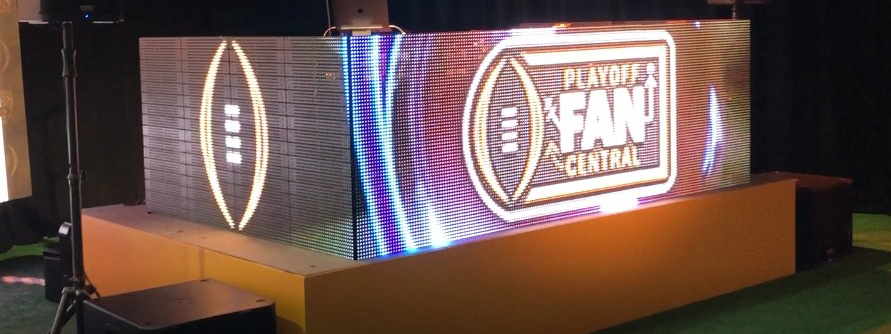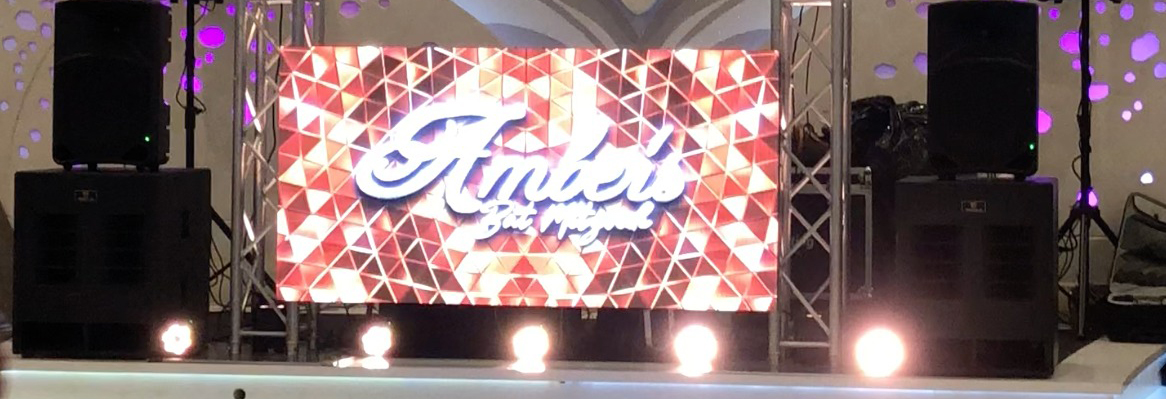1. What Is a DJ LED Screen?
DJ LED screen is a modular display system designed for live performances, combining high-brightness LED technology with dynamic visuals to elevate stage productions. Often integrated into a LED screen DJ booth, it serves as a visual centerpiece, syncing with music to create immersive experiences. Unlike traditional stage backdrops, these screens offer pixel-perfect clarity, flexibility in shape (curved, transparent, or 3D structures), and real-time content control, making them essential for modern electronic music shows, festivals, and club events.
For example, world-renowned DJs like Martin Garrix and David Guetta use LED walls to project hypnotic geometric patterns, branded visuals, or live camera feeds that react to beat drops, transforming stages into living digital canvases.
2. Why Are DJ LED Screens Becoming Popular?
The surge in demand for DJ LED screens stems from three key drivers:
Social Media-Driven Experiences: Audiences crave shareable moments. A study by EventMB found that 72% of attendees post stage visuals on Instagram, making LED walls a marketing tool for event virality.
Cost Efficiency: LED module prices have dropped 40% since 2020 (AV Magazine), enabling even small venues to rent lightweight P3.91 LED screens for under $50/day.
Versatility: From weddings (displaying romantic animations) to corporate launches (3D product holograms), these screens adapt to any theme. Brands like Red Bull now use portable LED screen DJ booths at pop-up events for maximum engagement.
3. Types of DJ LED Screens & Common Pixel Pitch
3.1 Popular Configurations
Curved LED Walls: Ideal for 360° stages, enhancing depth perception.
Transparent Mesh Screens: Allow background visibility (e.g., DJs interacting with digital elements).
L-Shaped DJ Booths: Wrap around performers for a “cocoon” effect.
Poster Panels: Ultra-thin (20mm), plug-and-play for mobile DJs.
3.2 Pixel Pitch Guidelines
P2.6-P3.91: Best for indoor clubs or weddings (viewing distance 3-10m). Offers 4K clarity for intricate details.
P4.8-P6.25: Suits festivals like Tomorrowland (15m+ viewing). Lower resolution but brighter (6000 nits) for sunlight readability.
4. Key Features to Look for in a DJ LED Screen
Brightness: 1500-8000 nits (indoor vs. outdoor).
IP65 Rating: Protects against rain, dust, and accidental beer spills.
Cabinet Durability: Magnesium alloy frames withstand frequent setup/teardown.
HDR Compatibility: Ensures vivid colors for cinematic content.
Seamless Bezels: <1mm gaps prevent “grid lines” in video mapping.
5. How DJ LED Screens Work?
Each LED module contains clusters of red, green, and blue diodes. When connected to a controller (e.g., Novastar MCTRL4K), the system converts video signals into PWM (Pulse Width Modulation) data, adjusting diode intensity to form images. Advanced setups use DVI fiber transmitters for lag-free transmission over 100m.
6. How to Use a DJ LED Screen Effectively?
6.1 Content Workflow
Pre-recorded loops (Adobe After Effects) for consistency.
Live generative art (TouchDesigner) for improvisation.
Camera integration (e.g., crowd reactions projected behind the DJ).
6.2 Sync with Lighting:
Use DMX protocols to link LED patterns with strobes or lasers.
6.3 Dynamic Zones
Split the screen into sections—show lyrics on one side and VJ effects on the other.

7. Benefits of Using DJ LED Screens at Events
Brand Amplification: Coca-Cola’s 2023 tour used LED walls to morph logos into dancing liquid bubbles.
Emotional Impact: Research shows LED visuals increase audience dopamine by 30% (EventTech Lab).
Cost Savings: Replace physical stage props with digital backdrops—no storage or transport fees.
8. Technical Considerations When Choosing a DJ LED Display
Viewing Distance: Formula: Minimum Distance (meters) = Pixel Pitch (mm) × 2. For P3.91, optimal viewing starts at 7.8m.
Power Requirements: 100㎡ LED wall ≈ 15kW. Use 20% extra capacity to avoid overheating.
Control Compatibility: Ensure support for Art-Net, sACN, or Kling-Net for lighting integration.
9. Maintenance Tips for DJ LED Screens
Cleaning: Use anti-static wipes weekly; compressed air for vents.
Storage: Stack cabinets vertically with silica gel packs to prevent moisture.
Troubleshooting: Dead pixels? Most panels allow hot-swapping modules in <2 mins.
10. Tips for DJs to Maximize LED Screen Usage
Content Templates: Design “theme packs” (e.g., cyberpunk, retro) for quick genre shifts.
BPM Sync: Map visuals to track tempo—slow transitions for house music, rapid flashes for dubstep.
Depth Illusions: Combine foreground animations (particles) with parallax backgrounds for 3D effects.
11. Future Trends in DJ LED Screens
AI-Powered Visuals: Tools like Synesthesia auto-generate content based on track mood (e.g., calm=flowing waves, intense=glitch art).
Transparent OLEDs: Samsung’s 2024 prototype offers 80% transparency for ghostly holograms.
Energy Savings: COB (Chip-on-Board) LEDs cut power use by 35% while boosting lifespan to 100,000 hours.
12. Conclusion
A DJ LED screen isn’t just eye candy—it’s a storytelling tool that bridges music and emotion. Whether you’re a club DJ needing a compact LED screen DJ booth or a festival headliner investing in a 1000㎡ DJ LED wall, prioritize pixel pitch, durability, and content versatility. As XR and AI reshape live entertainment, LED technology will remain the heartbeat of unforgettable performances. Start small, dream big, and let your visuals steal the show!
Post time: Apr-17-2025






